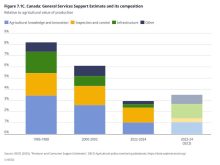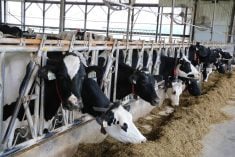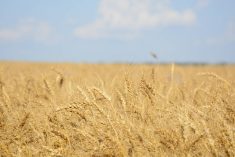[UPDATED: Nov. 15, 2022] Phosphorus management could fall off the radar as environmental messaging in agriculture increasingly focuses on climate change and nitrogen use.
“Appropriate nutrient management for things like phosphorus is tremendously important and needs to remain an ongoing focus,” says Lynda Nicol, Manitoba Association of Watersheds (MAW) executive director.
The federal government is pushing farmers to adopt practices that reduce greenhouse gas emissions. The On-Farm Climate Action Fund (OFCAF) is one of those big initiatives, and in Manitoba it is being administered by MAW.
Read Also

Journal pulls long-cited glyphosate study for ethics violations
The journal Regulatory Toxicology and Pharmacology has retracted a 2000 Monsanto-linked glyphosate review, drawing new scrutiny as Bayer faces mounting legal pressure.
[RELATED] Editor’s Take: There’s money on the table. Use it
But while Nicol says programs like OFCAF are important, knowing the impact of phosphorus is also important.
“Phosphorus loading is an issue that farmers certainly need to be aware of and that needs to be actively managed.”
Phosphorus is the main driver of Lake Winnipeg algae blooms that are commonplace in summer.
“That’s the limiting nutrient,” says Alexis Kanu, executive director of the Lake Winnipeg Foundation (LWF). “There are many whole-lake ecosystem studies that show that you can control algal blooms just by reducing phosphorus in other environments.”
Kanu says she recognizes the critical importance of addressing climate change, but the narrative surrounding it may be over-simplified.
“There are a number of fronts we need to be tackling the climate change challenge on, and one is reducing emissions,” she says. “But another important thing is dealing with the consequences of climate change that we’re already experiencing. And certainly, that’s where the health of our freshwater lakes comes in.”
[RELATED] Farmers and industry say government’s emissions plans at odds with export goals
Kanu says Canadians experience climate change through changes in water.
“Right now we’re seeing these big swings in the cycles. And certainly, when it comes to lakes like Lake Winnipeg, more water coming more suddenly is washing nutrients like phosphorus into our waterways, and that’s contributing to the growth of algal blooms.
“And then that’s exacerbated by higher temperatures in the summer, which just promotes more algal growth.”
The LWF works with watershed districts in the province, and they, in turn, work with municipalities and farmers on a local level.
“There are a lot of complicated interactions and players in the agricultural landscape,” Kanu says. “Some of it falls to individual landowners, some falls to municipalities and some falls to the province. Where and how nutrient management occurs, and how that intersects with water management, I think needs to be explored, because we really can’t fragment these issues anymore.”
Nicol agrees. She points to the province’s Growing Outcomes in Watersheds (GROW) program that focuses on the principles of watershed management and how they apply to nutrient management.
“Work done through GROW is designed to support appropriate nutrient management, whether that would be nitrogen or phosphorus. So from the watershed perspective, I don’t see that shifting out of our focus in any way, shape or form.”
But what about the farmers?
“A lot of the attention right now seems to be on nitrogen management for greenhouse gases. That’s where the money is being spent,” says John Heard, soil fertility specialist with Manitoba Agriculture. Even so, Heard notes that all fertilizer is a cost, and fertilizer prices (including phosphorus) are high.
“There is not much wiggle room to use it poorly or sloppily. Economics is driving people to use it efficiently, whether it’s nitrogen or phosphorus.”
Heard also says a lot of recommendations for reducing nitrogen involve banding, which is also effective at keeping phosphorus out of the water table. Many other practices are also complementary.
It’s not as though farmers will forget the lessons they’ve learned about phosphorus management, he adds.
“Society asks farmers to keep a lot of balls in the air at the same time, and to keep the nitrogen management ball in the air doesn’t mean they suck the phosphorus ball down on the ground.”
Heard points out that cover cropping, which is being incentivized through OFCAF, in some cases, may actually cause more phosphorus to enter water bodies.
“(Cover crops) tend to bleed phosphorus over the winter, but I think it’s pretty minor.”
Nicol says there are government programs that fund projects related to phosphorus reduction. Among them is the Lake Winnipeg Basin Program, which has a specific focus on nutrient reduction as it relates to phosphorus. She is hopeful that programs like this will continue because they also include monitoring and data collection to evaluate the effectiveness of projects.
“We’re very hopeful that at the federal level, funding for the Lake Winnipeg Basin program will continue in future years,” Nicol says.
*Update(s): The article previously indicated that the GROW program is operated by the Manitoba Association of Watersheds. The Manitoba government operates the GROW program. Also, the executive director of the Lake Winnipeg Foundation was incorrectly named. We apologize for the error.
















